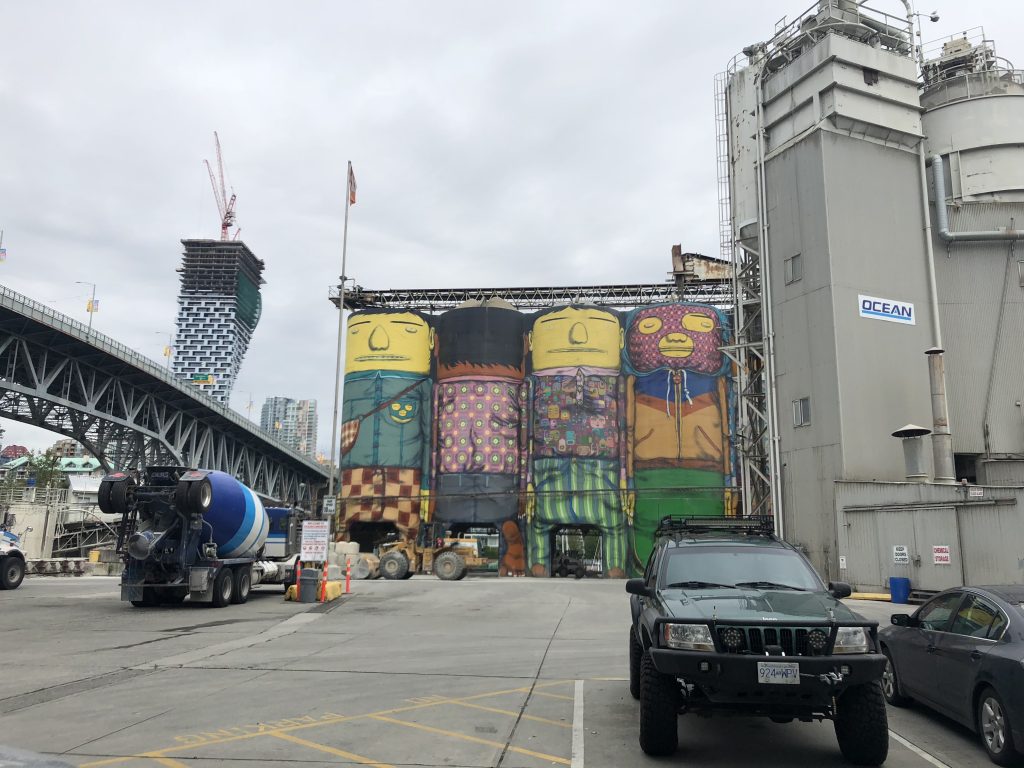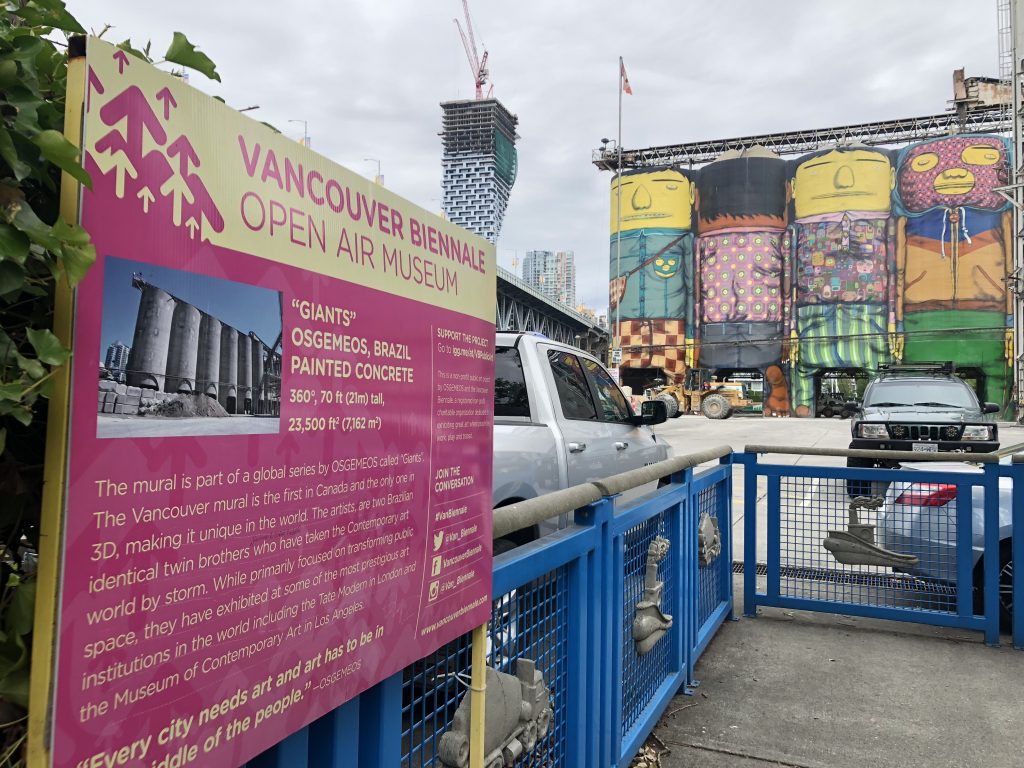Granville Island is a tourist spot in Vancouver, Canada. It is a farmer’s market with shopping stores, food and beverage places, and art centers. In the middle of the island, gigantic factory facilities were painted like four mischievous boys. I found them artwork.

The name of these artworks are Giants. As the name suggests, these painted concretes are 70 ft (21m) tall.
The mural is part of a global series by OSGEMEOS called “Giants.” The Vancouver Mural is the first in Canada and the only one in 3D, making it unique in the world. The artists are two Brazilian identical twin brothers who have taken the Contemporary art world by storm. While primarily focused on transforming public space, they have exhibited at some of the most prestigious art institutions in the world including the Tate Modern in London and the Museum of the Contemporary Art in Los Angeles.

The Brazilian artists said “every city needs art and art has to be in the middle of the people.” Marketing researchers have also paid attention to how people move through museum spaces and experience art.
**
Reference
This article focuses on somatic experience–not just the process of thinking bodily but how the body informs the logic of thinking about art. We examine the links between embodiment, movement, and multisensory experience insofar as they help to elucidate the contours of art appreciation in a museum. We argue that embodiment can be identified at two levels: the phenomenological and the cognitive unconscious. At the first level, individuals are conscious of their feelings and actions while, at the second level, sensorimotor and other bodily oriented inference mechanisms inform their processes of abstract thought and reasoning. We analyze the consumption stories of 30 museum goers in order to understand how people move through museum spaces and feel, touch, hear, smell, and taste art. Further, through an analysis of metaphors and the use of conceptual blending, we tap into the participants’ unconscious minds, gleaning important embodiment processes that shape their reasoning.

One thought on “Every city needs art and art has to be in the middle of the people”